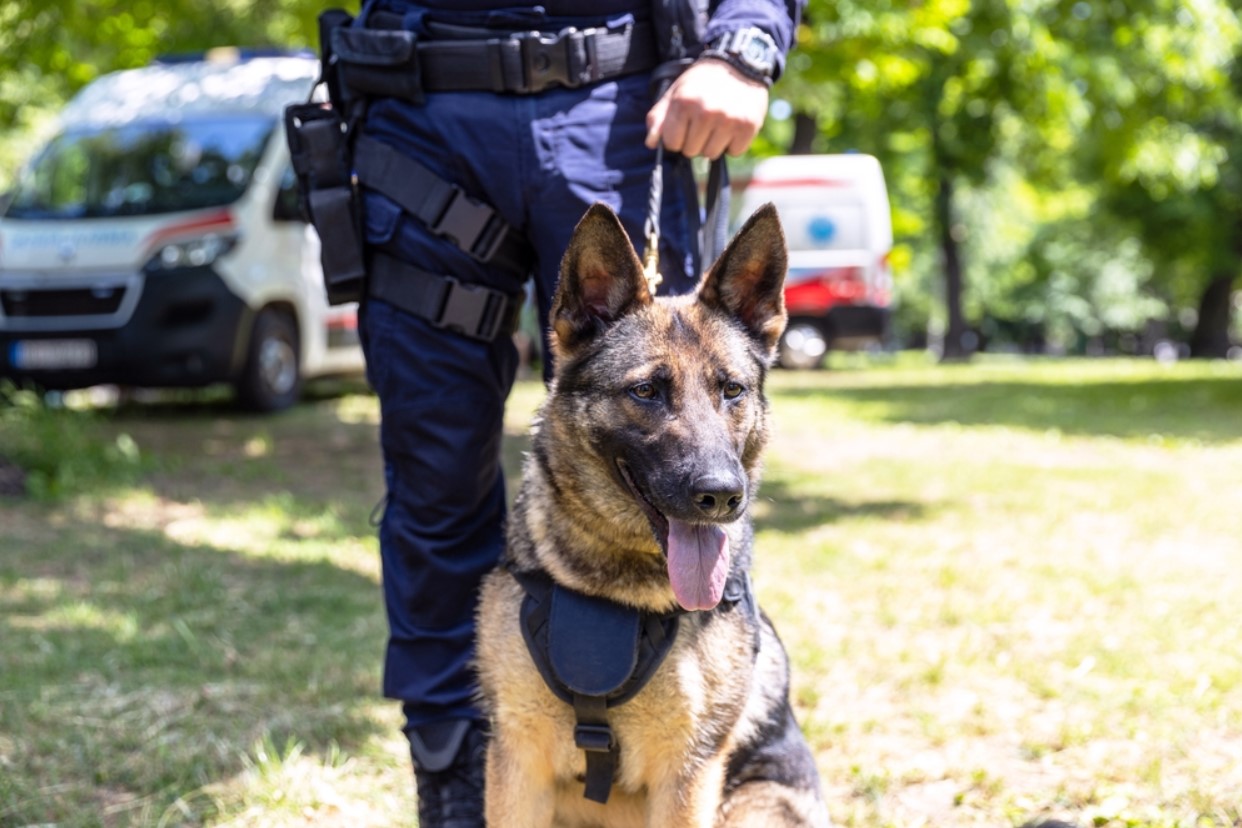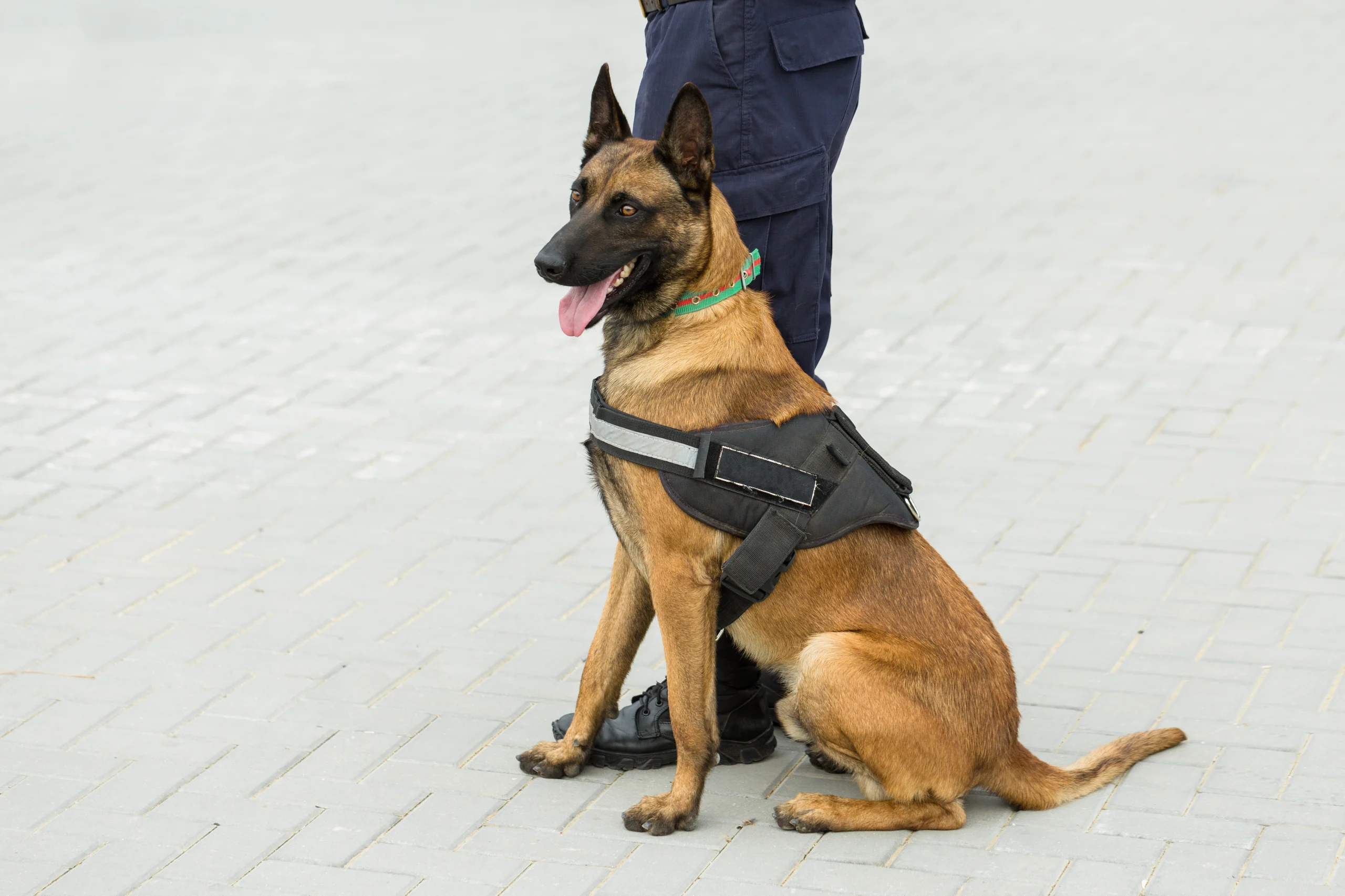Over the years, security policies have changed greatly to meet growing complexity and problems. From biometric technology to sophisticated surveillance systems, the instruments at hand are rather amazing. However, within this high-tech terrain, one tried-and-true approach stands out as absolutely remarkable in many situations: K9 security dogs. Celebrated for their unmatched skills, they are invaluable for contemporary security plans rather than only guardians.
This article investigates why K9 security dogs still revolutionise the safeguarding of communities, possessions, and life. We will closely examine their historical background, special qualities, practical uses, and convincing arguments against many conventional security policies.
The Origins of K9 Security Dogs
Dogs have long been used in security and service capacities for thousands of years. Dogs were used by ancient societies, including the Greeks and Egyptians, to guard palaces, animals, and military camps. Both in times of peace and conflict, their sharp senses and instinctive protection made them perfect allies.
Fast forward to the contemporary period, when during World Wars I and II, K9 units became increasingly important. Dogs were taught to help in search-and-rescue operations, sense landmines, and convey communications. Their purposes grew over time, and today, K9 units are the mainstay in military forces, police agencies, customs operations, and private security teams. Their basic worth has stayed the same: they are devoted, courageous, and quite competent partners in the struggle for security, even as their particular responsibilities have changed.
Do You Want Professional K9 Security? Get it Now.
What Makes K9 Security Dogs Special?
There are several qualities that make these dogs exceptional security providers. Some of them are discussed below.
1. Great Sense of Smell
The improved sense of smell of K9 security dogs is among their most well-known skill. Dogs can detect even the smallest of scents since their olfactory system is up to 100,000 times more sensitive than humans. They are now essential in identifying explosives, illegal narcotics, and other dangerous chemicals. For instance, whereas a machine might be able to identify a bomb under specific circumstances, a trained dog can find explosives in dynamic, fast-moving environments such as packed stadiums or airports.
2. Amazing Trainability
Dogs, unlike most animals, are uniquely eager to learn and carry out tasks—especially when under the direction of a qualified handler. Common breeds employed in K9 facilities, such as Labrador Retrievers, German Shepherds, and Belgian Malinois, are not only smart but also eager to please. They are quite helpful in many different contexts because of their capacity to pick up difficult orders and fit for highly specialised security duties.
3. Dedication and Affinity
Though dogs are naturally devoted animals, the relationship developed during K9 training amplifies this quality. Unmatched in commitment to its handler and duty is a K9 dog. Their dependability under pressure comes from this loyalty, which guarantees their focus won’t change even in hectic or dangerous environments.
4. Emotional and Physical Guide
Dogs are rather sensitive to the emotions and actions of people around them. It makes them rather good at identifying hazards or odd behaviour in ways technology could overlook. A K9 dog, for instance, can detect anxious conduct in a suspect that would point to criminal intention.
Where K9 Security Dogs Excel
K9 dogs are quite flexible and shine in many situations when conventional security measures are not sufficient. Here are some examples:
Detection of Narcotics and Explosives
K9 units mostly serve to spot threats, including narcotics or hidden bombs. In a fraction of the time a human could, they can sort among parcels, cars, and even packed spaces. In high-stakes events like border security searches or airport checks, their speed and accuracy drastically lower hazards.
Search-and-Rescue Missions
Finding missing persons depends critically on K9 units, particularly in areas like forests, disaster zones, or collapsed structures. Their strong senses help them to discover smells or hints that would be invisible to human rescuers. For example, time is of the essence as K9 teams have effectively found survivors under debris following natural events like earthquakes.
Crowd Control and Deterrence
Just the presence of a security dog can discourage potential offenders. Their frightening look and their training to respond forcefully prevent illegal activity in public areas and events. They raise potential wrongdoers’ level of awareness even without direct engagement.
Guarding Assets
K9 dogs are also used for security guard patrols of businesses, homes, and high-security sites. Dogs offer active monitoring and real-time threat response, unlike fixed security cameras or alarm systems.
Why K9 Units Outperform Conventional Security Methods
Although many security systems are built on technology, K9 units cover important areas where machines cannot reach. These are the key reasons they are better in many situations:
1. Cost-Effectiveness:
Although maintaining a K9 unit and training calls for expenditure, their capacity to execute several duties successfully lessens the need for further staff or equipment. For high-security detail, for example, a single K9 team might substitute for the demand for several people.
2. Adaptability:
K9 security dogs can operate in diverse surroundings—a busy metropolitan plaza or a remote mountain trail. Often, in such unpredictable environments, machines find difficulty. Dogs can also be taught to specialise in particular activities, ranging from spotting contraband to suspect capture.
3. Human-Like Decision-Making:
K9 dogs show an intuitive awareness of events, whereas technology depends just on pre-defined programming. Dogs are well-suited for situations requiring fast thinking since they can evaluate immediate hazards and react adaptably.
4. Effectiveness as a Deterrent:
Usually running passively, traditional security systems document events upon occurrence. K9 units merely by existing actively discourage criminal activity. For instance, burglary rates in communities with police dogs are frequently far lower than in those without them.
The Training Process and Handler Bond
Every outstanding K9 security dog comes from a demanding training program and a close relationship with their handler. The training program aims not only to arm dogs with essential abilities but also to mentally and emotionally match them with their human counterparts.
Puppy Selection
Early on in life, K9 training usually starts with a careful selection of puppies displaying attributes including confidence, vigour, and focus. Usually, innate ability in security jobs drives breed selection for German Shepherds or Belgian Malinois.
Skill Development
Depending on the dog’s degree of specialisation, training courses might last several months to years. Among the taught skills are tracking, scent detection, obedience, and response orders. Real-world simulations expose dogs to help them be ready for fieldwork.
Building the Bond
Working with their K9 partners, handlers develop emotional ties that build mutual respect and trust. During operations, this link is vital since the handler depends on the dog’s intuition and vice versa. A good relationship guarantees the team performs as one.
The Future of K9 Security in Modern Threat Management
As security threats become more diverse, the role of K9 units continues to expand. From detecting emerging threats like synthetic drugs to assisting in cybersecurity by spotting clandestine data storage devices, their applications are evolving. Combining the instinctive capabilities of dogs with advanced technologies, such as wearable biometric sensors, offers exciting potential for enhanced functionality.
Conclusion
K9 units are crucial allies in preserving safety and order, not only animals under a leash. Their inherent talents, along with specific instruction and human direction, make them exceptional in contemporary security operations. While technology advances, the heritage of K9 security dogs reveals that not all effective solutions require displays or circuits. Sometimes, the acute nose, loyal heart, and swift paws of a well-trained dog are all we need to stay secure. With their continuing presence, we may be certain that our safety is in capable paws.We are an industry-leading security service specialist. You can check out our comprehensive security services or contact us for a personalised consultation.











